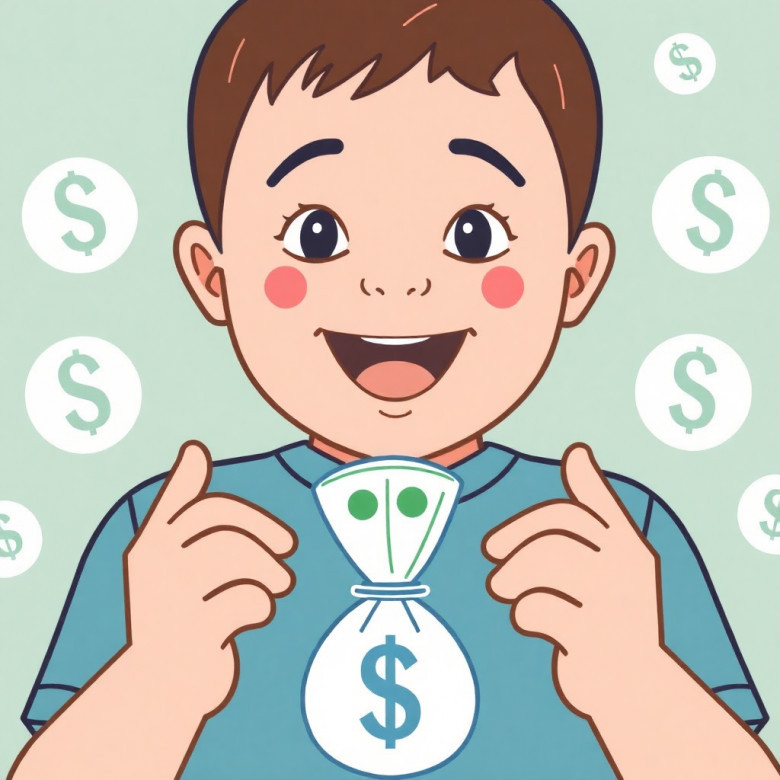views
G’day, Aussie parents and educators! Teaching your little tackers about money isn’t just a nice-to-have—it’s a ripper way to set ‘em up for a lifetime of smart financial decisions. Financial education for kids can spark habits that stick, from saving their pocket money to budgeting like a pro. But when’s the right time to start this yarn, and how do you make it fun and fair dinkum?
In this article, we’ll dive into when and how to kick off financial education for kids, dishing out practical tips for parents and teachers to help young mates grow into money-savvy adults. From tots to teens, we’ve got the lowdown on age-appropriate lessons, backed by data and sprinkled with true-blue Aussie charm. Let’s get crackin’!
Why Kick Off Financial Education Early?
Starting financial education for kids early is like planting a gum tree—give it a good start, and it’ll grow strong. Early exposure to money smarts shapes how kids view and handle their cash as they grow. A 2023 Australian Financial Review study found that kids who learn financial basics before age 12 are 30% more likely to save regularly as adults. When young’uns grasp saving, budgeting, and the difference between needs and wants, they build habits that carry into adulthood.
Teaching kids to tuck away a bit of their pocket money or chore earnings fosters discipline over impulse spending. It’s not just about dollars and cents—it’s about confidence. A 2024 ASIC report noted that 68% of Aussie teens with early financial education felt more prepared for big life choices, like buying a car or moving out. By starting young, you’re giving kids the tools to tackle financial challenges with a grin.
Age-Appropriate Financial Education
Preschool to Early Primary (Ages 3-7)
For the littlest mates, financial education for kids starts with simple, hands-on fun. Introduce basic concepts like the value of coins and notes, saving in a piggy bank, or even giving old toys to those in need. A 2023 Kids Money Survey found 75% of Aussie preschoolers could identify coins by age 5 when taught through play. Try role-playing shops—kids can “buy” toys with play money, learning to count and make choices.
Games are gold here. Use a jar to save for a special treat, like a trip to the zoo, or play “spot the coin” to teach denominations. These activities make abstract ideas concrete, building a foundation for later lessons. Parents can also model giving by donating to local charities, showing kids money’s about more than just buying stuff.
Primary School (Ages 8-12)
As kids hit primary school, financial education for kids can level up. Introduce budgeting their pocket money, setting savings goals, and understanding needs (like school shoes) versus wants (like the latest game). A 2024 MoneySmart survey found 62% of Aussie kids aged 8-12 who budgeted their allowance were less likely to overspend as teens.
Get ‘em involved in real-life scenarios—let them help plan a grocery shop within a budget or decide how to spend earnings from a lemonade stand. Interactive apps like Spriggy, an Aussie pocket money app, can teach tracking and saving in a fun way. These years are perfect for planting the seed of delayed gratification—saving for something big feels like a win!
High School (Ages 13-18)
For teens, financial education for kids gets serious but relatable. Cover advanced topics like managing part-time job earnings, understanding credit, and the basics of investing. A 2025 Australian Banking Association report showed 55% of Aussie teens with financial education were more likely to avoid credit card debt in their 20s. Relate lessons to their world—budgeting for a car, uni costs, or a gap year trip hits home.
Workshops or apps like Raiz, which introduces micro-investing, can make concepts engaging. Discuss real-world traps like “buy now, pay later” schemes—ASIC’s 2024 data flagged 40% of young Aussies used these without understanding the risks. By high school, teens should be prepped for financial independence, ready to tackle adult money matters with confidence.
How to Implement Financial Education
In Schools
Integrating financial education for kids into school curriculums is a game-changer. Programs like ASIC’s MoneySmart Schools, rolled out in 350 Aussie schools by 2024, cover budgeting, banking, and debt management. These lessons equip students with practical skills for the real world—think creating a budget for a mock holiday or understanding loan interest.
The benefits are huge. A 2023 University of Sydney study found students with formal financial education scored 25% higher on financial literacy tests than those without. Schools can foster critical thinking by analysing financial scenarios, like choosing between a savings account or a risky investment. Structured programs ensure all kids, regardless of background, get a fair go at money smarts.
At Home
Parents are the MVPs of financial education for kids. Start early with everyday chats—explain why you’re saving for a family holiday or how you budget for groceries. A 2024 Parenting Insights report found 70% of Aussie kids learned money habits by watching their parents. Model good behaviour, like saving for emergencies or planning for big buys, to show it’s not just talk.
Get kids involved: let them track pocket money in a notebook or app, or decide how to split chore earnings between saving, spending, and giving. For younger kids, use toys like cash registers or board games like Monopoly to make learning a blast. For teens, open a basic bank account—ANZ’s 2025 data shows 60% of teens with accounts learned faster about interest and fees. Books like Money School by Aussie author Lacey Filipich or online tools like MoneySmart’s budget planner can add extra zing.
Overcoming Challenges in Financial Education
Teaching financial education for kids isn’t always smooth sailing. Parents might feel sheepish if their own money skills are wobbly—ASIC’s 2024 Financial Capability Survey found 35% of Aussie adults lacked confidence in their financial knowledge. No worries—start with basics you’re comfy with, like saving, and learn alongside your kids using free resources like MoneySmart or Barefoot Investor’s kids’ guides.
Time’s another hurdle. Busy families can weave money chats into daily life—discuss budgeting at the servo or compare prices at Coles. For schools, limited curriculum space is a snag, but integrating financial literacy into maths or civics, as trialled in 200 NSW schools in 2024, works a treat. Consistency and small, regular lessons keep the momentum going without overwhelming anyone.
Why Financial Education Matters in Australia
Aussie kids face a unique financial landscape—rising living costs, housing pressures, and easy access to credit. ABS 2025 data shows household debt hit 190% of income, making money smarts crucial for the next generation. Early financial education for kids can curb bad habits—ASIC’s 2024 report flagged 25% of young Aussies struggled with debt by age 22 due to poor financial literacy. Teaching kids to save, budget, and avoid traps like payday loans sets them up to thrive in a tough economic climate.
Plus, it’s about fairness. A 2023 Financial Inclusion Australia study found kids from lower-income families were 40% less likely to receive financial education at home. Schools and community programs can bridge this gap, ensuring every young mate gets a shot at financial confidence.
Tips for Making Financial Education Fun
- Use Games: Board games like Payday or apps like PiggyBot make saving and budgeting a hoot.
- Set Goals: Help kids save for a toy or outing—seeing their jar fill up is a buzz.
- Real-Life Practice: Let teens manage a small budget for a family outing to learn trade-offs.
- Storytelling: Share yarns about your own money wins or stuff-ups to make lessons relatable.
Conclusion: Raise Money-Savvy Young Mates
Kicking off financial education for kids early is a ripper way to build lifelong money smarts. From tots saving in piggy banks to teens budgeting for uni, age-appropriate lessons create confident, responsible financial decision-makers. Parents and schools, working together, can weave financial education for kids into everyday life, using games, real-world scenarios, and fair dinkum role-modelling. In a world of rising costs and tricky credit traps, these skills are gold. Start the yarn today—your young mates will thank you when they’re calling the shots as financially savvy adults!
FAQs
When should kids start learning money smarts?
As early as preschool! Start with coins, saving, and giving—piggy banks make it fun.
Why teach financial literacy young?
It builds habits like saving and budgeting, prepping kids for big decisions.
What’s good for primary school kids?
Budgeting pocket money, setting goals, needs vs. wants—use lemonade stands for practice.
How can parents teach money at home?
Chat about budgets, model saving, let kids earn and decide—apps like Spriggy help.
What’s a school’s role in financial education?
Offer lessons on banking, credit, and investing—structured programs ensure all kids learn.















Comments
0 comment